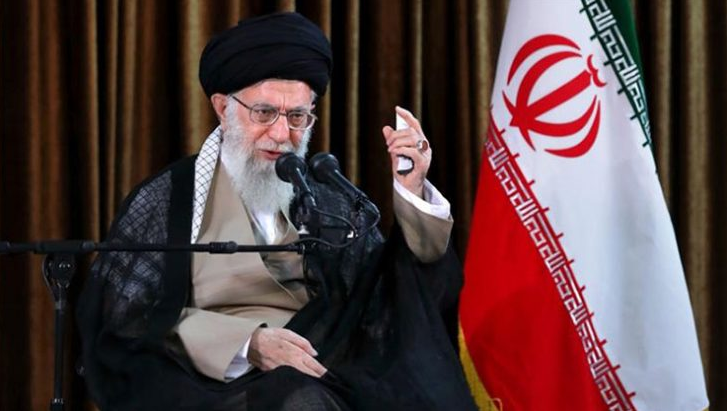
Iran seizes tanker, resumes uranium enrichment as tensions rise with US
Published on January 5, 2021 at 11:37 AM by FACE OF MALAWI
Iran announced Monday that it had resumed enriching uranium to 20% purity, far beyond the limits laid out in the 2015 nuclear deal, in a move likely to further escalate tensions with the United States.
Iran also seized a South Korean-flagged chemical tanker on Monday, according to semi-official Iranian news agencies, for “creating environmental and chemical pollution in the Persian Gulf.”
Both moves came a day after the one-year anniversary of the US killing of top Iranian general Qasem Soleimani, and less than three weeks before the end of Donald Trump’s presidency.
As tensions continue to rise, President Trump directed the Pentagon to keep a US aircraft carrier in the Middle East, reversing a decision to send it out of the region last week.
An Iranian government spokesman said Monday that experts had restarted uranium enrichment toward a 20% target at its underground Fordow nuclear facility, according to semi-official news agency Mehr and state news agency IRNA.
Iran currently enriches its uranium stockpile up to around 4.5%, which is above the 3.67% cap imposed by the 2015 pact with world powers, but far short of the 90% that is considered weapons-grade. Iran has continually denied it intends to assemble nuclear weapons.
The country had informed the International Atomic Energy Agency (IAEA) of its intent to enrich uranium at 20%, IAEA spokesman Fredrik Dahl told CNN on Friday. On Monday morning, government spokesman Ali Rabiei said it started the enrichment process a “couple of hours ago” in the Fordow site, noting that the first UF6 enriched uranium would be produced in a few hours, IRNA said.
The US State Department condemned both the tanker seizure and Iran’s resumption of uranium enrichment, with a spokesperson noting that “Iran’s enrichment program was originally developed in secret, including at Fordow, and Iran retained a vast archive of records from its past nuclear weapons program, along with many of the key personnel who led that program.”
A challenge from Iran
The development poses a challenge for US President-elect Joe Biden, who has pledged to reinstate the deal after he takes office on January 20. President Trump walked away from the agreement in 2018, instead restarting sanctions on the Iranian regime.
The ramp-up came after Iran’s parliament passed a law last month to boost uranium enrichment to pre-2015 levels and block nuclear inspections if sanctions are not lifted. The bill was approved in the wake of the assassination of Iran’s chief nuclear scientist Mohsen Fakhrizadeh in November.
“The law obliges the Atomic Energy Organization of Iran to produce at least 120 kg of 20% enriched uranium annually and store it inside the country,” the Mehr news agency reported.
Iranian president Hassan Rouhani said in January 2020 that Iran was enriching more uranium than before the deal was signed, and in March the United Nations found that the country had nearly tripled its stockpile in a matter of months.
Rouhani, whose government signed the 2015 deal with the US and other world powers, opposed last month’s bill, arguing that it would undermine diplomacy.
Iran’s government has repeatedly called on the US to restore the agreement that Trump withdrew from in 2018.
Biden’s national security adviser Jake Sullivan told CNN on Sunday that the incoming US administration would reenter the pact if Iran came back into compliance with it.
Sullivan also said the Biden administration would then seek a “follow-on negotiation” over Iran’s ballistic missile capabilities.
“Our view is that ballistic missiles, and Iran’s ballistic missile program, has to be on the table as part of that follow-on negotiation,” Sullivan said, adding the Biden administration would seek to bring some of Iran’s regional partners to the table.
Rouhani said last month that Iran’s missile program was non-negotiable, Reuters reported.


